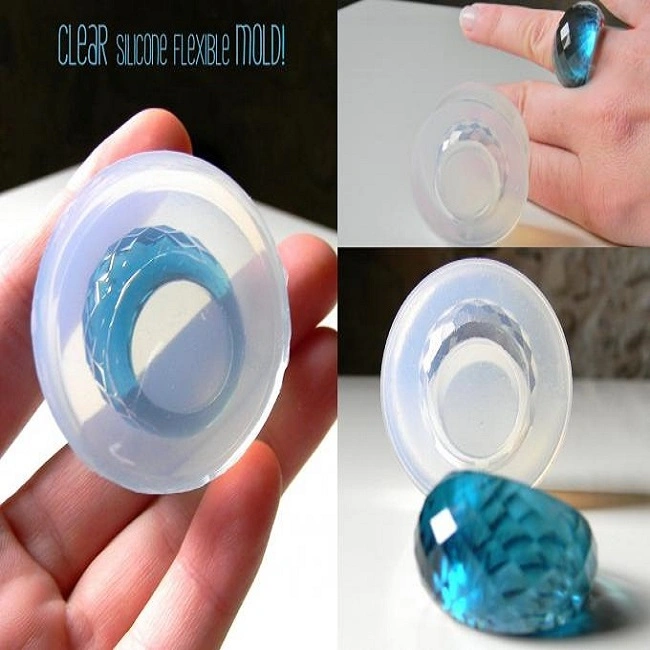high quality mold making liquid rtv2 silicone rubber for jewelry
/accesories molds
Description of Polyaddition Cure SiliconeRTV silicone rubber is a two component elastomeric cross-linking at
room temperature. The polymerization can be accelerated by heat
(max. 1500 C). The silicone components are delivered as liquids,
which once mixed and cured transform into a elastic and resistant
material. Polymerization occurs without formation of heat.
Advantages of Polyaddition Cure Silicone1. Easy Curing: MCPLA-H40 polymerizes at room temperature (23C).
The curing characteristics is independent of part thickness.
2. High tear and tensile strength
3. Long shelf life with low shrinkage
4. Fast mixing (10: 1) and easy processing due to the low viscosity
Applications of Polyaddition Cure SiliconeLabel manufacturing, Molding applications requiring low shrinkage,
such as toys, jewelers, automotive, rapid prototyping etc.
 Instructions for making silicone molds
Instructions for making silicone molds1. Mixing the two components
According the mixing ratio 10: 1 weighting part A and B, the two
components may be thoroughly mixed either by hand or using a low
speed electric to minimize the entrance of air and to avoid any
temperature increase.
Note: It is also possible to use a special mixing and dispensing
machine for the two silicone components, further information is
available upon request.
2. Molding
The mixture should be degassed preferably at 30 to 50 mbar to
eliminate any entrapped air. If a dispensing machine is used, the
two components are degassed separately prior to mixing. The
silicone mixture expands to 3 to 4 times of its initial volume and
bubbles rise to the surface. The bubbles progressively disappear
and the mixture returns to its initial volume after 5 to 10
minutes. Wait a few minutes to complete the degassing and then
flash the vacuum. The silicone is ready for pouring, either by
gravity or under low pressure.
Note: Flashing the vacuum once or twice accelerates the degassing.
It is recommended to use a container with a high diameter/height
ratio(3 to 4 times of the initial volume)
3. Polymerization
The curing may be slowed down at lower temperature or accelerated
by applying heat.
Note: In general contact with certain materials can inhibit the
cross linking of RTV.
Natural rubbers vulcanized with sulfur
RTV elastomeric is catalyzed with metal salts, e. G. Tin compounds
PVC stabilized with tin salts and additives
Epoxy catalyzed with amines
Certain organic solvents, such as Ketones, alcohols etc.
In case of doubt, it is recommended to test the substrate by
applying a small quantity of the mixed silicone on a restricted
area.
Storage and shelf life of Polyaddition Cure Siliconertv2 liquid Silicone rubber must be used within 12 months from the
manufacturing date. Beyond this date, MC silicone no longer
guarantees the products. please confirm specification with thesales
. In order to preserve best properties, it is recommended to follow
strictly the following guidelines:
Store the original packing tightly sealed and at a temperature
below 30 C
Use the product as soon as the packaging has been opened.

